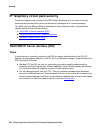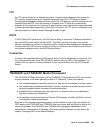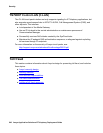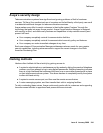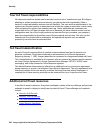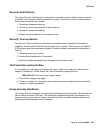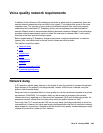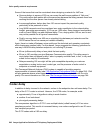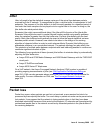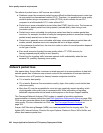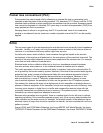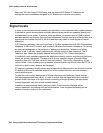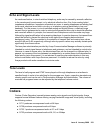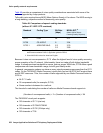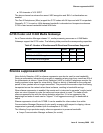
Voice quality network requirements
246 Avaya Application Solutions IP Telephony Deployment Guide
Some of the issues that must be considered when designing a network for VoIP are:
● One-way delays in excess of 250 ms can cause the well-known problem of "talk-over."
This occurs when both parties talk at the same time because the delay prevents them from
realizing that the other person has already started talking.
● In some applications, delays less than 150 ms can impact the perceived quality,
particularly in the presence of echo.
● Long WAN transports must be considered as a major contributor to the network delay
budget, averaging approximately 10-20 ms per 1000 miles. Some transport mechanisms,
such as Frame Relay, can add additional delay. Thus, staying within 150 ms, end to end,
may not be possible for all types of connections.
● Finally, one-way delay over 400 ms on signaling links between port networks and the
S8700-series Server can cause port network instability.
Again, there is a trade-off between voice quality and the technical and monetary constraints
which businesses confront daily. For this reason, Avaya suggests the following guidelines for
one-way LAN/WAN delay between endpoints, not including IP phones:
● 80 ms (milliseconds) delay or less yields the best quality.
● 80 ms to 180 ms delay can give Business Communication quality. This delay range is
much better than cell-phone quality if echo is properly controlled and, in fact, is very well
suited for the majority of businesses.
● Delays exceeding 180 ms might still be quite acceptable depending on customer
expectations, analog trunks used, codec type, and the presence of echo control in
endpoints or network equipment.
The Converged Network Analyzer (CNA) system is capable of providing ongoing
measurements of network delay (see C
NA Application Performance Rating on page 254). CNA
will also generate alarms when network delay rises to levels that are detrimental for voice
quality. For more information on CNA, see The Converged Network Analyzer
on page 344.
Codec delay
In addition to delay incurred in the network, codecs in the endpoints also add some delay. The
delay of the G.711 codec is minimal. However, the G.729 codec, for example, adds:
● approximately 10 ms of algorithmic delay in each direction
● another 5 ms look-ahead
● plus signal processing delays.
The compression algorithm in G.723.1 uses multiple blocks (called frames) of 30 ms voice
samples per packet. This results in increased latency over codecs configured to use 20 ms or
less samples per packet.
The G.722 codec adds a 0.82 ms delay.



